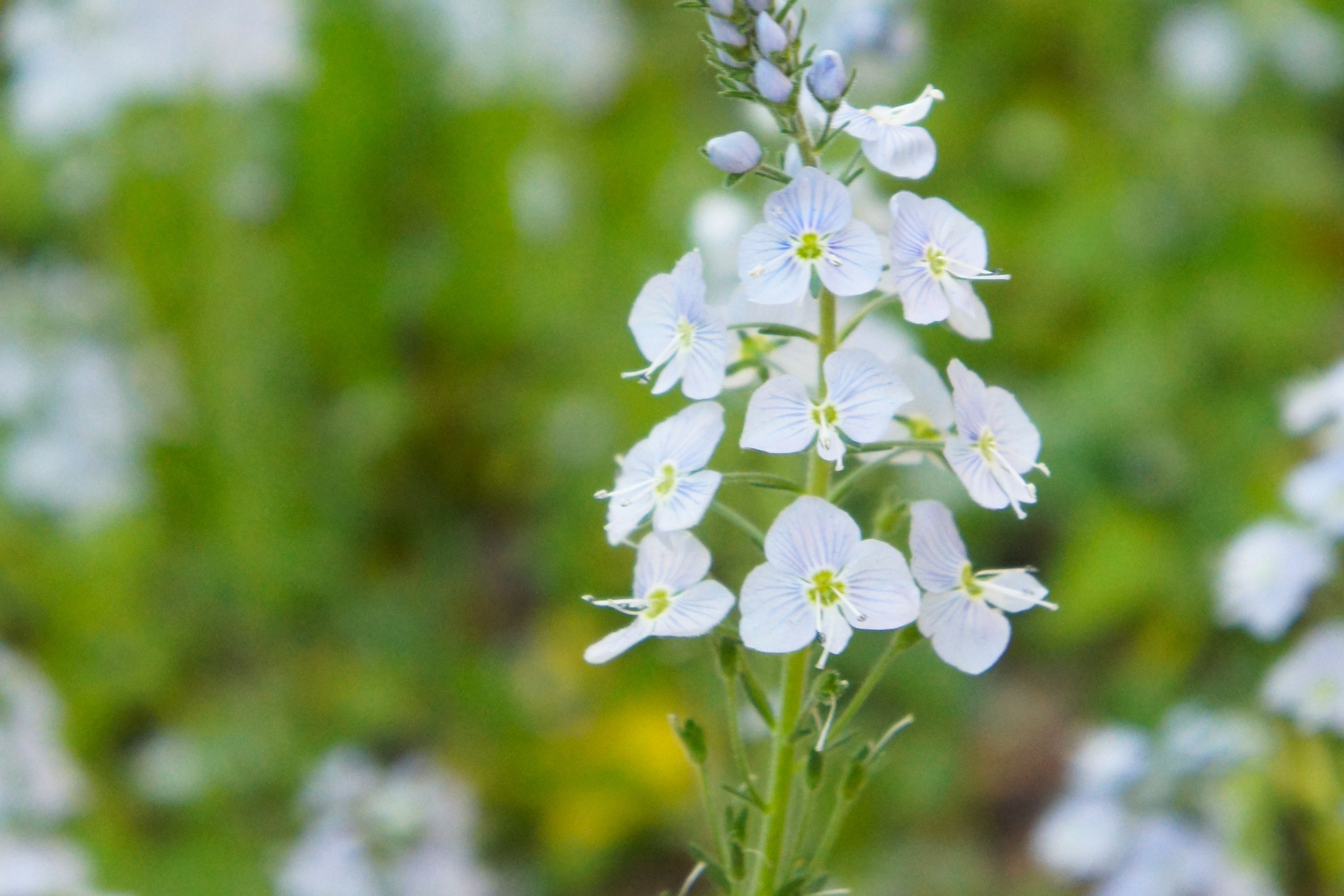Gentian speedwell
(Veronica gentianoides)

Description
Veronica gentianoides, the gentian speedwell, is a species of flowering perennial plant in the family Plantaginaceae found in the Middle East, from Turkey to Iran. Veronica gentianoides grows from spreading above-ground rhizomes, eventually forming a mat of glossy green leaves, grouped into rosettes. Individual leaves are more or less elliptical in shape and 2–8 cm (0.8–3.1 in) long. It flowers in early summer, producing narrow erect spikes (racemes) up to 30–40 cm (12–16 in) tall, with blue flowers which are 10–16 mm (0.4–0.6 in) across. The species is very variable. Flowers can be from almost white to deep blue; plants growing at high altitudes are considerably shorter, possibly only 5–10 cm (2–4 in) tall, with smaller leaves. The species is found in Turkey, the Caucasus and Iran, where it grows in damp, relatively open habitats, including forests, grassland and alpine areas up to 3,600 m (11,800 ft). It is grown in temperate climates as an ornamental plant, particularly by alpine gardeners. Some cultivars are available, including 'Nana' (which may just be a smaller high altitude form), 'Variegata' which has leaves marked with white, and 'Tissington White', which has very pale flowers. Veronica is the largest genus in the flowering plant family Plantaginaceae, with about 500 species; it was formerly classified in the family Scrophulariaceae. Common names include speedwell, bird's eye, and gypsyweed. Taxonomy for this genus is currently being reanalysed, with the genus Hebe and the related Australasian genera Derwentia, Detzneria, Chionohebe, Heliohebe, Leonohebe and Parahebe now included by many botanists. Monophyly of the genus is supported by nuclear ribosomal internal transcribed spacer (ITS) and cpDNA. The taxa of the genus are herbaceous annuals or perennials, and also subshrubs, shrubs or small trees if Hebe is included. Most of the species are from the temperate Northern Hemisphere, though with some species from the Southern Hemisphere; Hebe is mostly from New Zealand. The genus name Veronica used in binomial nomenclature was chosen by Carl Linnaeus based on preexisting common usage of the name veronica in many European languages for plants in this group. Such use in English is attested as early as 1572. The name probably reflects a connection with Saint Veronica, whose Latin name is ultimately derived from Greek, Berenice.
Taxonomic tree:







